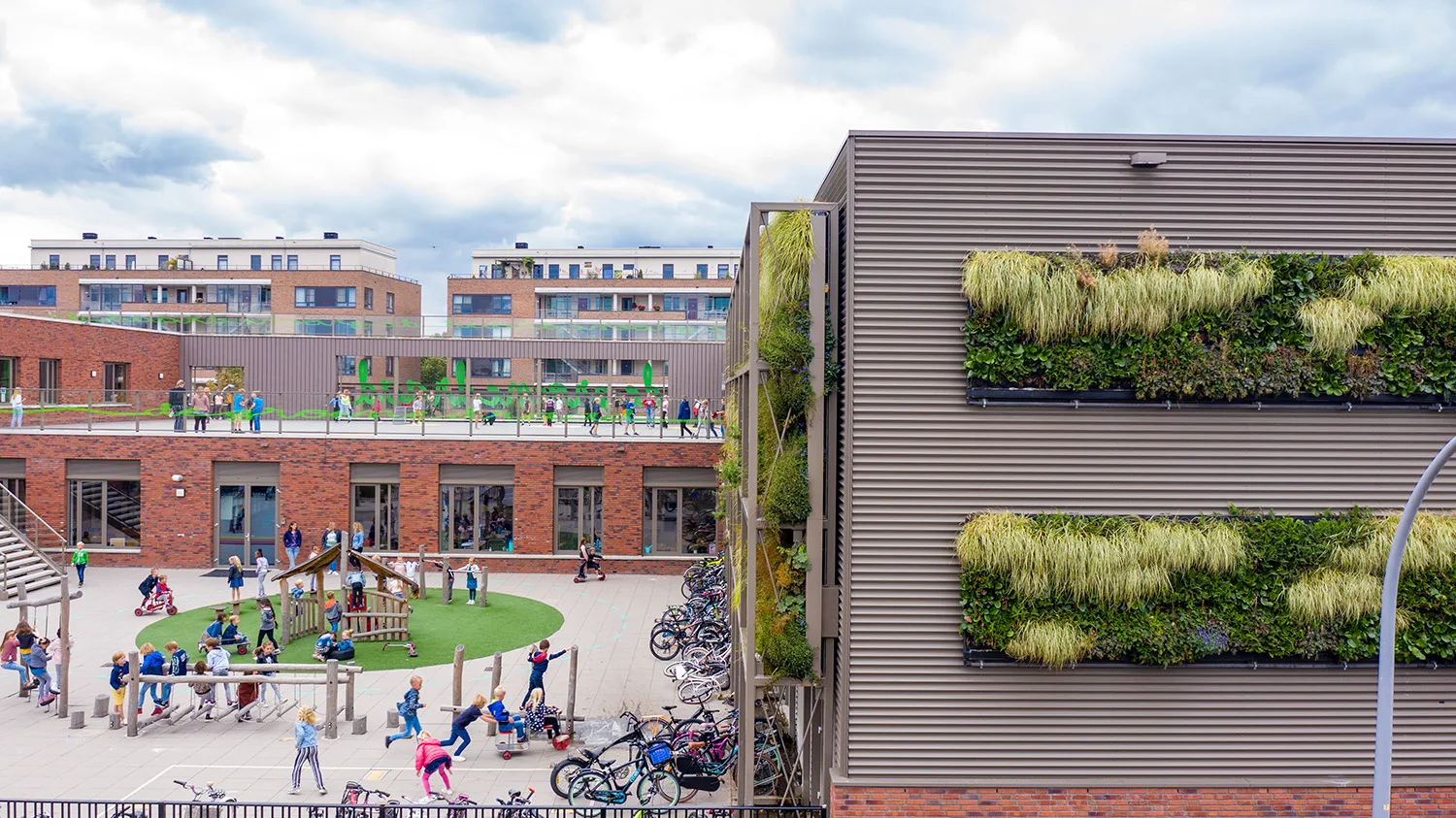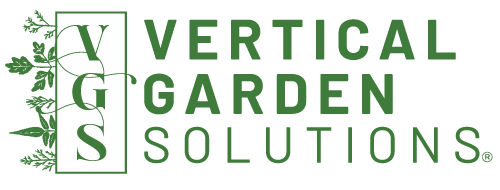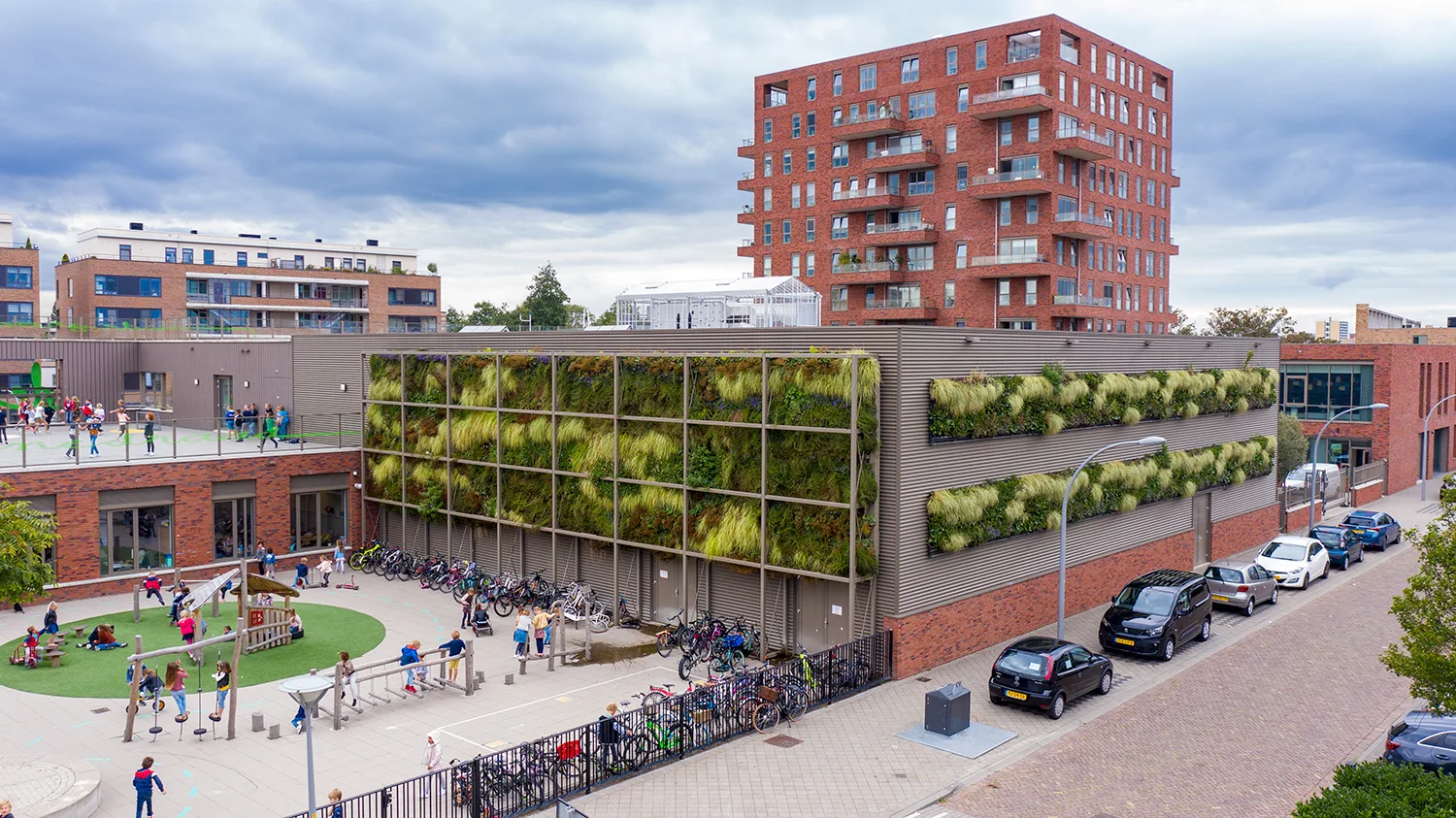In an era where urban spaces are constantly evolving, vertical gardens on buildings are not just a trend but a revolution in urban landscaping. These lush, plant walls are transforming the way we interact with nature in our bustling city environments. Let’s delve into how these gardens are built, their benefits, the impact they have on urban living, and their significance in achieving LEED and WELL building certifications.
Building a Vertical Garden: A Blend of Art and Science
How do you build a vertical garden on a building?
Building a vertical garden on a building is a process that blends horticulture with architecture. It starts with a vision and a wall – whether it’s an exterior or interior wall of a building. Key considerations include but are not limited to:
- Structural Assessment: Ensuring the wall can support the weight of the garden.
- Plant Selection: Choosing plants that are suited to the local climate and the specific microclimate of the building.
- Irrigation and Drainage: Setting up systems to ensure plants receive the right amount of water and nutrients.
- Ongoing Maintenance: Regular care to keep the garden thriving.
As specialists in creating vertical gardens in San Diego, Los Angeles, and Orange County, we offer tailored services to bring these green visions to life. Our expertise ensures that every aspect, from design to installation and maintenance, is handled professionally, transforming your building into a living, breathing piece of art.
The Role of Vertical Gardens in LEED and WELL Building Certifications
Incorporating vertical gardens on buildings not only enhances aesthetic appeal and environmental health but also contributes significantly to achieving LEED (Leadership in Energy and Environmental Design) and WELL Building certifications. These certifications, crucial for sustainable and health-focused building designs, evaluate a building’s impact on the environment and its occupants’ well-being.
LEED Certification and Living Walls
LEED, established by the U.S. Green Building Council, is a widely recognized green building certification system. It assesses buildings across multiple criteria, including water management, energy usage, indoor air quality, and use of sustainable materials. Living walls can contribute to several LEED credits:
- Sustainable Sites: Living walls can assist in stormwater management by absorbing and filtering rainwater, which contributes to LEED credits for stormwater design and quantity control.
- Water Efficiency: Using captured rainwater for irrigation and selecting water-efficient plants can earn credits for water-efficient landscaping.
- Energy & Atmosphere: Living walls provide natural insulation, reducing heating and cooling requirements and contributing to optimized energy performance.
- Materials & Resources: Utilizing recycled materials in living wall systems can contribute to credits for recycled content and regional materials.
- Indoor Environmental Quality: Indoor living walls improve air quality by filtering pollutants, contributing to credits for indoor air quality management.

WELL Certification and Living Walls
WELL Building Standard, launched by the International WELL Building Institute, focuses on the health and wellness of building occupants. Living walls can contribute to WELL certification in several ways:
- Air and Water Quality: Plants in living walls can enhance air quality by removing toxins and particulates, contributing to better indoor environmental quality.
- Natural Light Exposure and Thermal Comfort: Living walls can regulate indoor temperature and, when strategically placed, can enhance natural light distribution.
- Sound Levels: The presence of living walls can reduce and buffer noise levels to more comfortable levels.
- Well-being: The presence of plants has proven to improve mental well-being and productivity through biophilic design, a principle that connects building occupants more closely to nature.
Economic and Brand Benefits
Buildings with LEED and WELL certifications can enjoy several benefits:
- Increased Property Value: LEED-certified buildings often have higher property values.
- Reduced Operating Costs: Energy efficiency improvements can lead to lower energy costs.
- Tax Incentives: There may be tax incentives available for sustainable features like living walls.
- Enhanced Brand Reputation: Companies that prioritize sustainability often enjoy a positive reputation, which can lead to increased customer loyalty
Increased financial return for Corporations
Incorporating living walls into business premises can be a strategic move for companies aiming to achieve WELL Building Certification. This innovative approach transcends aesthetic appeal, directly contributing to the mental well-being and productivity of employees. By integrating more plants into the building environment, businesses can foster a healthier, more vibrant workspace. This is not just about bringing nature indoors; it’s about actively combating ‘Sick Building Syndrome’ – a scenario where poor indoor environmental quality leads to decreased employee health and productivity. Investing in living walls with the assistance of experts like Vertical Garden Solutions aligns with the WELL Building principles, emphasizing the importance of employee health and well-being in the workplace.
The return on this investment is twofold: it enhances employee performance and satisfaction, which in turn drives business success. Additionally, by mitigating issues related to ‘Sick Building Syndrome’, companies can significantly reduce the costs associated with healthcare, absenteeism, and reduced productivity. In essence, embracing living walls is not just a step towards environmental responsibility, but a savvy business decision. It demonstrates a commitment to employee health, leads to financial savings by reducing the indirect costs of unhealthy work environments, and ultimately, contributes to a more dynamic, productive, and profitable business model.
Embracing Vertical Gardens on Buildings
By integrating living walls and vertical gardens into your building design, you not only contribute to a more sustainable and health-focused environment but also position your building to meet LEED and WELL certification criteria. This alignment with sustainability and wellness standards is not just an environmental statement but also a strategic business decision, enhancing the building’s value and appeal in the market.
For more detailed information on how our vertical garden solutions can help your building achieve LEED and WELL certifications, contact us today!




